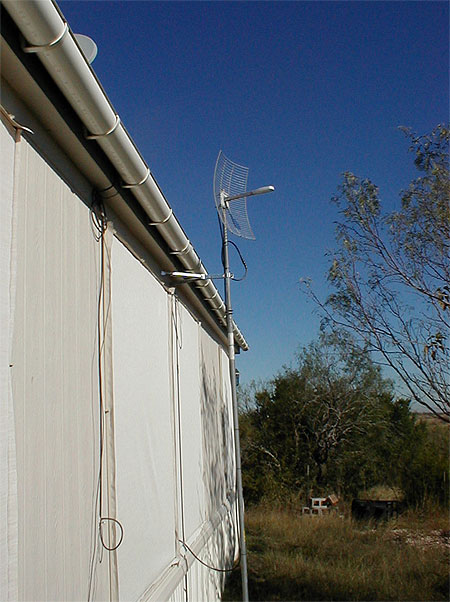My friend cannot get DSL where he lives since he is too far from his central office. He could get a T1 installed at his home, but it would cost eight times as much as the wireless link. The CATV company offered to run a cable to him, but the charge would have been as great as the T1 link.
Before the wireless link became available, he had used satellite for Internet connectivity, but, since he runs servers out of his house, the latency time was unacceptable. Interactive applications running on a remote computer were also very slow due to delays while typing.
He also tried ISDN, but found it to be too slow for multiple users to share, expensive, and unreliable due to insect and water problems with the telephone company equipment. It was also four times the cost of the wireless link.
There are thousands of wireless ISPs serving the rural US and many other nations. Some use proprietary point-to-point links, others use 802.11 like this one. The IEEE 802.16 (WIMAX) standards will attempt to unify the terrestrial wireless access market the way IEEE 802.11 (WiFi) has unified the wireless LAN market.
My friend gets full 802.11b speed of 11 Mbps to the ISP tower and the link works fine during the rain while the DirectTV satellite TV has had some problems with heavy rain. (The television dish is also visible in the photo). Latency in the wireless link to the tower is in the 18-25 ms range.
He also has a WiFi LAN (using a different channel) for connectivity inside the house and in the yard. He likes working outside in his gazebo.
